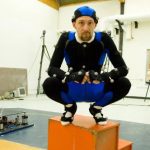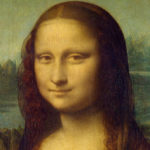 Technology
Technology  Technology
Technology  Humans
Humans 10 Everyday Human Behaviors That Are Actually Survival Instincts
 Animals
Animals 10 Animals That Humiliated and Harmed Historical Leaders
 History
History 10 Most Influential Protests in Modern History
 Creepy
Creepy 10 More Representations of Death from Myth, Legend, and Folktale
 Technology
Technology 10 Scientific Breakthroughs of 2025 That’ll Change Everything
 Our World
Our World 10 Ways Icelandic Culture Makes Other Countries Look Boring
 Misconceptions
Misconceptions 10 Common Misconceptions About the Victorian Era
 Mysteries
Mysteries 10 Strange Unexplained Mysteries of 2025
 Miscellaneous
Miscellaneous 10 of History’s Most Bell-Ringing Finishing Moves
 Technology
Technology Top 10 Everyday Tech Buzzwords That Hide a Darker Past
 Humans
Humans 10 Everyday Human Behaviors That Are Actually Survival Instincts
 Animals
Animals 10 Animals That Humiliated and Harmed Historical Leaders
Who's Behind Listverse?

Jamie Frater
Head Editor
Jamie founded Listverse due to an insatiable desire to share fascinating, obscure, and bizarre facts. He has been a guest speaker on numerous national radio and television stations and is a five time published author.
More About Us History
History 10 Most Influential Protests in Modern History
 Creepy
Creepy 10 More Representations of Death from Myth, Legend, and Folktale
 Technology
Technology 10 Scientific Breakthroughs of 2025 That’ll Change Everything
 Our World
Our World 10 Ways Icelandic Culture Makes Other Countries Look Boring
 Misconceptions
Misconceptions 10 Common Misconceptions About the Victorian Era
 Mysteries
Mysteries 10 Strange Unexplained Mysteries of 2025
 Miscellaneous
Miscellaneous 10 of History’s Most Bell-Ringing Finishing Moves
10 CGI Characters That Pushed Special Effects Teams to the Limit
In the mesmerizing world of blockbuster filmmaking, the digital revolution has ushered in an era where the fantastical becomes nearly tangible. As audiences crave more spectacular and immersive experiences, the pressure mounts on special effects teams to create mind-bending visual spectacles. This list highlights ten revolutionary computer-generated characters whose complexity didn’t just push the boundaries of technology—they nearly shattered them.
Take, for example, the colossal Devastator from Transformers: Revenge of the Fallen. This behemoth, assembled from multiple construction vehicles, demanded an extraordinary level of detail and computational power, testing the limits of current CGI capabilities. Each segment of Devastator had to move in perfect harmony, a feat that required the animators to rethink their approach to CGI physics and interaction.
Then there’s Thanos, the formidable antagonist of the “Avengers” saga. Bringing this character to life with believable emotional depth and physical presence required a synergy of advanced motion capture and meticulous CGI. The task was to craft a villain who could express a range of complex emotions, from wrath to sorrow, while engaging in epic battles that felt both grandiose and personally engaging.
As we dive deeper into the stories behind these characters, we uncover the herculean efforts of countless artists and engineers. Their trials and triumphs not only advanced the field of visual effects but also set new standards for storytelling in cinema.
Related: 10 Unbelievable Movie Scenes Made without CGI
10 Devastator: The Colossus of Chaos
The creation of Devastator in Transformers: Revenge of the Fallen represents one of the most ambitious undertakings in the history of CGI. This massive combiner robot, formed by the union of several construction vehicles, challenged the visual effects team to push the limits of digital technology. Each segment of Devastator was meticulously designed to function both independently and as part of the larger machine, requiring sophisticated animation and coordination.
Industrial Light & Magic (ILM), tasked with bringing Devastator to life, utilized advanced simulation software to handle the complex interactions between the different parts. The technical crew had to ensure that each transformation looked seamless and maintained the integrity of the individual vehicles. This was no small feat, considering the enormous size and the detailed mechanics involved in each transformation sequence.
Moreover, the scenes featuring Devastator demanded extensive rendering resources due to their complexity and detail. The character’s massive scale and destructive capabilities meant that every action scene had to be carefully planned and executed to avoid overwhelming the film’s runtime with rendering delays.
The impact of Devastator on the screen was profound, showcasing a blend of artistic vision and cutting-edge technology that set new standards for future CGI characters. This groundbreaking effort took the capabilities of CGI to new heights and tested the limits of what could be achieved in film.[1]
9 Thanos: The Titan Challenge
The creation of Thanos for Avengers: Infinity War and Endgame was a landmark achievement in the field of CGI, combining nuanced performance capture with complex visual effects. The character demanded a portrayal that was both physically imposing and emotionally nuanced, requiring a sophisticated blend of technology and artistry. Thanos’s facial expressions, in particular, needed to convey a depth of emotion to match his profound narrative impact, pushing the boundaries of what CGI could achieve in terms of character depth.
The visual effects team, led by Weta Digital and ILM, employed some of the most advanced motion capture techniques available. Josh Brolin’s performance was captured in meticulous detail, translating every subtle facial movement and emotional nuance onto the CGI model of Thanos. This process involved the use of hundreds of tiny cameras to capture a vast array of expressions and movements, ensuring that the character’s digital portrayal was as lifelike and convincing as possible.
Beyond facial capture, Thanos’s sheer size and his interaction with environments and other characters posed additional challenges. Each scene required intricate choreography between the actor and the visual effects teams to make his movements believable across various battle scenes. The result was a villain who was not just a technological marvel but also a character with a compelling presence, deeply integrated into the storyline. The work on Thanos set new standards for character animation in film, showcasing the potential of CGI to create complex and engaging characters that resonate with audiences on an emotional level.[2]
8 Smaug: Mastering the Dragon’s Complexity
The creation of Smaug in The Hobbit: The Desolation of Smaug presented a colossal challenge that pushed the boundaries of visual effects technology. This dragon, more than just a mythical beast, was a high-stakes endeavor that involved detailed anatomical construction, right down to the muscles and scales, to ensure his interactions in the film felt authentic and engaging, especially during critical scenes with Bilbo.
The Visual Effects Supervisor, Joe Letteri, highlighted the intricate process of bringing Smaug to life. Each scale on Smaug’s body was carefully designed to reflect his personality and the dynamic movements required in his scenes. The complexity of animating such a creature required not just artistic vision but also advanced technological solutions. Weta Digital, leveraging its proprietary software “Tissue,” meticulously simulated the anatomy of Smaug’s muscles and movements, a process that earned the software a Scientific and Engineering Award.
Additionally, the Mistika DI Colour Grading system played a crucial role in enhancing the visual impact of Smaug by altering and enriching scene colors to match the film’s darker and more intense narrative style. This integration of color work was critical in bringing the fiery dragon to life, making his presence on screen not only visually stunning but also narratively compelling.
The efforts to perfect Smaug’s appearance were a testament to the dedication of the visual effects team, whose work was recognized with Academy Award nominations for Visual Effects, among others. The attention to detail in the animation and simulation of Smaug set a new standard for character creation in cinema, making him one of the most memorable and technically accomplished CGI characters ever created.[3]
7 Davy Jones: The Seamless Fusion of Real and Digital
Davy Jones from Pirates of the Caribbean exemplifies the pinnacle of digital character creation, particularly through the masterful integration of Bill Nighy’s actual eyes into the CGI model. This blend of real human elements with digital artistry served as a groundbreaking achievement in visual effects, providing the character with a lifelike depth that surpassed the common pitfalls of digital creations.
The design of Davy Jones was revolutionary, especially in how it addressed the challenge of the uncanny valley—where digital characters often fall short due to their lifeless eyes. By using Nighy’s real eyes, the character maintained a connection to humanity that purely digital eyes seldom achieve. This decision allowed audiences to see genuine emotion and soul in Davy Jones, enhancing the believability of his character and enabling a deeper emotional engagement with the viewers.
Additionally, the physical attributes of Davy Jones, such as his tentacled face and the textural details of his skin, were rendered with exceptional skill. The shiny, slimy appearance of his tentacles and the nuanced way light interacted with his skin were consistent with his aquatic nature, making him appear both otherworldly and believable. The visual effects team skillfully replicated environmental interactions, such as raindrops hitting his face or wind affecting his tentacles, adding a tangible reality to his presence on screen.
This meticulous attention to detail in Davy Jones’ creation set a new standard for CGI and remains a celebrated achievement in visual effects. The character not only stands as a testament to the capabilities of digital art but also highlights the importance of integrating real human elements to enhance the authenticity of digital characters. The visual effects team’s work was recognized with an Academy Award, underscoring the success and impact of their innovative approach to blending real and digital filmmaking techniques.[4]
6 Gollum: Pioneering Emotion in Digital Characters
Gollum, the conflicted creature from Peter Jackson’s The Lord of the Rings trilogy, marked a significant milestone in the evolution of CGI. His character was one of the first fully realized digital beings to display a depth of emotions that resonated with audiences worldwide. The creation of Gollum was not merely a technical achievement; it was a dramatic endeavor that bridged the gap between digital art and compelling storytelling.
The character was brought to life through a combination of performance capture and detailed CGI, with actor Andy Serkis providing both the voice and the physical movements. This method allowed the animators to capture the subtleties of Serkis’ performance, translating them into Gollum’s expressions and actions with unprecedented fidelity. The result was a character who could convey a wide range of emotions, from despair to malice, making him both terrifying and pitiable.
The technical team faced the challenge of making Gollum’s skin textures and movements believable, especially during his interactions with live-action characters. The animators meticulously crafted his wiry muscles and the reflective sheen of his eyes, which were crucial for bringing the character’s complex psyche to life. These elements were essential for audiences to fully engage with Gollum’s journey and to believe in his existence within the story’s fantasy world.
Gollum’s groundbreaking representation set new standards for character animation, influencing future projects in the film industry and beyond. His blend of humanlike expressiveness and technical sophistication remains a benchmark in cinematic history, demonstrating the potential of CGI to create emotionally complex characters. This achievement not only pushed the boundaries of visual effects but also enriched the narrative depth of the entire trilogy.[5]
5 Smart Hulk: Blending Brains and Brawn
The introduction of Smart Hulk in Avengers: Endgame was not only a visual effects milestone but also a narrative twist that delighted fans. This incarnation of Hulk combined Bruce Banner’s intellect with the Hulk’s physical prowess, a fusion made possible by groundbreaking advancements in CGI and performance capture technology. ILM spearheaded these efforts, creating a character that perfectly balanced human emotion and superhero strength.
ILM’s challenge was to authentically translate Mark Ruffalo’s nuanced performance into the CGI model of Smart Hulk. This required a sophisticated update to their facial performance-capture system, which was crucial in capturing the subtleties of Ruffalo’s expressions. By utilizing Disney Research’s Medusa system, they achieved unprecedented fidelity in replicating facial movements, ensuring that Ruffalo’s performance was not lost in the translation from human to CGI character.
The visual effects team meticulously re-sculpted Hulk’s body to reflect this new hybrid identity, ensuring he retained his formidable presence while also displaying a more refined intellect. This was particularly evident in scenes where Smart Hulk had to engage in complex conversations rather than resort to brute force. Such scenes demanded a delicate balance, showcasing his intellectual side without diminishing his physicality.
Moreover, ILM’s revamped animation software allowed more precise control over the CGI model, enabling the artists to subtly adjust Ruffalo’s performance. This was critical in scenes where Smart Hulk’s emotional depth had to be conveyed without crossing into the uncanny valley. The culmination of these efforts was brilliantly displayed when Smart Hulk donned the Infinity Gauntlet, delivering a performance that was both emotionally resonant and physically intense.
The creation of Smart Hulk set a new standard for digital characters in cinema, demonstrating the potential of advanced CGI to blend human emotion with superhero spectacle. This technological triumph not only enhanced the storytelling of Avengers: Endgame but also pushed the boundaries of what is possible in visual effects.[6]
4 King Kong: Symphony of the Silver Screen
Peter Jackson’s 2005 remake of King Kong not only resurrected a cinematic legend but also exemplified the marriage of advanced visual effects and poignant musical scoring, setting a benchmark for how technology and artistry can coalesce to reimagine a classic. The ambitious project was infused with groundbreaking effects and a rapid, last-minute musical composition that profoundly influenced its narrative depth and emotional impact.
James Newton Howard, tasked with the colossal challenge of composing the score in just four weeks, captured the essence of Kong’s epic tale through a dynamic orchestral score. His compositions had to synchronize with the visual grandeur crafted by Weta Digital, where the detailed recreation of 1930s Manhattan and the perilous jungles of Skull Island came to life. The urgency of Howard’s task mirrored the intense production environment, with his music scores being sent overnight to Jackson in New Zealand, reflecting a tightly coordinated effort across continents.
The film’s production design, led by Grant Major, was equally formidable. Major and his team meticulously recreated the architectural and atmospheric elements of Depression-era New York City, complementing the narrative’s scale with realistic yet artistically enhanced environments. This blend of practical and digital craftsmanship was crucial in maintaining the film’s historical authenticity while allowing for the fantastical elements of Kong’s story to unfold convincingly.
King Kong showcased not only technological prowess but also a deep reverence for filmmaking. The integration of high-caliber visual effects, rapid yet rich musical composition, and detailed production design culminated in a modern retelling of a beloved film classic. The project was a testament to the capabilities of contemporary cinema to weave complex visual tales enhanced by compelling music, earning it a distinguished place in the annals of film history and a triumphant reception that underscored its artistic and technological achievements.[7]
3 T-1000: The Pinnacle of Liquid-Metal Effects
The creation of the T-1000 in Terminator 2: Judgment Day represented a quantum leap in visual effects technology, primarily driven by the innovative team at ILM. This antagonist, with its groundbreaking liquid-metal form, set a new standard for CGI in cinema, showcasing a flexibility and realism previously unattainable.
The concept for the T-1000 was borne out of director James Cameron’s ambition to advance beyond the already impressive T-800 model. Inspired by the CGI achievements in The Abyss, Cameron envisioned a villain made entirely of a mercury-like substance, capable of seamless transformations and possessing an almost ghostly presence. This vision required the creation of a character that could believably morph into different shapes and impersonate other characters, pushing the boundaries of digital technology of the time.
ILM utilized sophisticated computer-generated imagery to craft the T-1000’s fluid movements and reflective surface. The visual effects team developed new rendering techniques that allowed them to simulate the reflective and refractive properties of mercury, a task that involved complex mathematical models and considerable computational power. The effects were not just technical achievements but also integral to the narrative, enhancing the T-1000’s menacing and nearly invincible persona.
The execution of the T-1000 character was a meticulous process involving extensive collaboration between visual effects artists, animators, and Cameron himself. The success of these efforts is evident in the film’s enduring impact and its significant influence on the future of visual effects in filmmaking. The T-1000 remains a testament to the creative and technical expertise of ILM and a landmark achievement in the history of cinema.[8] [8]
2 Avatar’s Panodra
The visual effects of Avatar stand as a monumental achievement in film, with its vibrant portrayal of Pandora and the Na’vi setting new benchmarks in digital filmmaking. Under James Cameron’s direction, Avatar harnessed cutting-edge technology to craft an immersive alien world that was not only a visual marvel but also an emotional journey for audiences.
Central to the storytelling of Avatar was the innovative use of performance capture technology, which intricately captured the emotional essence and physical movements of the actors. This allowed for the creation of the Na’vi characters in a way that conveyed profound human emotions within an alien appearance. The actors, adorned in specially designed motion capture suits, were able to bring a nuanced human touch to their CGI counterparts, bridging our world with the fantastical realities of Pandora.
The film also pioneered efforts in virtual photography, a method that enabled Cameron to interact with, direct, and adjust scenes within the CGI environment in real time. This technology ensured a seamless blend of live-action and computer-generated elements, grounding the mythical aspects of Pandora—such as its floating mountains and luminescent plants—in a tangible reality that viewers could connect with.
Moreover, the meticulous crafting of Pandora’s ecosystem by the visual design team led by Dylan Cole involved a detailed depiction of alien flora and fauna inspired by Earth’s diverse landscapes. This attention to detail in creating a believable alien ecosystem was pivotal in enhancing the immersive experience of the film.
Avatarnot only demonstrated the extensive capabilities of current visual effects technology but also influenced the future direction of cinematic storytelling, illustrating how digital effects can be integral to narrative depth and audience engagement.[9]
1 Dr. Manhattan: The Fusion of Actor and CGI
Dr. Manhattan from Watchmen exemplifies a pinnacle in digital character creation, where human performance seamlessly merges with advanced CGI to craft a photo-realistic superhero. This complex character required innovative visual effects to convincingly depict his god-like abilities and luminescent appearance. Billy Crudup’s nuanced performance was captured in detail through sophisticated motion-capture technology, which meticulously recorded his movements and facial expressions.
The visual effects team, led by Pete Travers and VFX supervisor John “DJ” DesJardin, faced the challenge of portraying Dr. Manhattan’s ability to change size, duplicate himself, and manipulate matter. Opting for a completely computer-generated character allowed for unprecedented control over his appearance and movements. The physique of fitness model Greg Plitt was digitized to create Manhattan’s perfectly sculpted form, integrating it with Crudup’s facial scans to achieve a convincing human-CGI hybrid.
Innovative lighting techniques were also employed to replicate Dr. Manhattan’s iconic blue glow. Crudup wore a suit embedded with thousands of LEDs, providing a dynamic light source that interacted realistically with the environment. This not only enhanced the visual realism but also added depth to the scenes, influencing the set’s lighting and reflections.
The final portrayal of Dr. Manhattan set a new standard for CGI characters in film, demonstrating how digital effects can transcend visual spectacle to become integral to storytelling and character development. This synthesis of actor and CGI has paved the way for future innovations in film, making Dr. Manhattan a benchmark in visual effects technology.[10]








